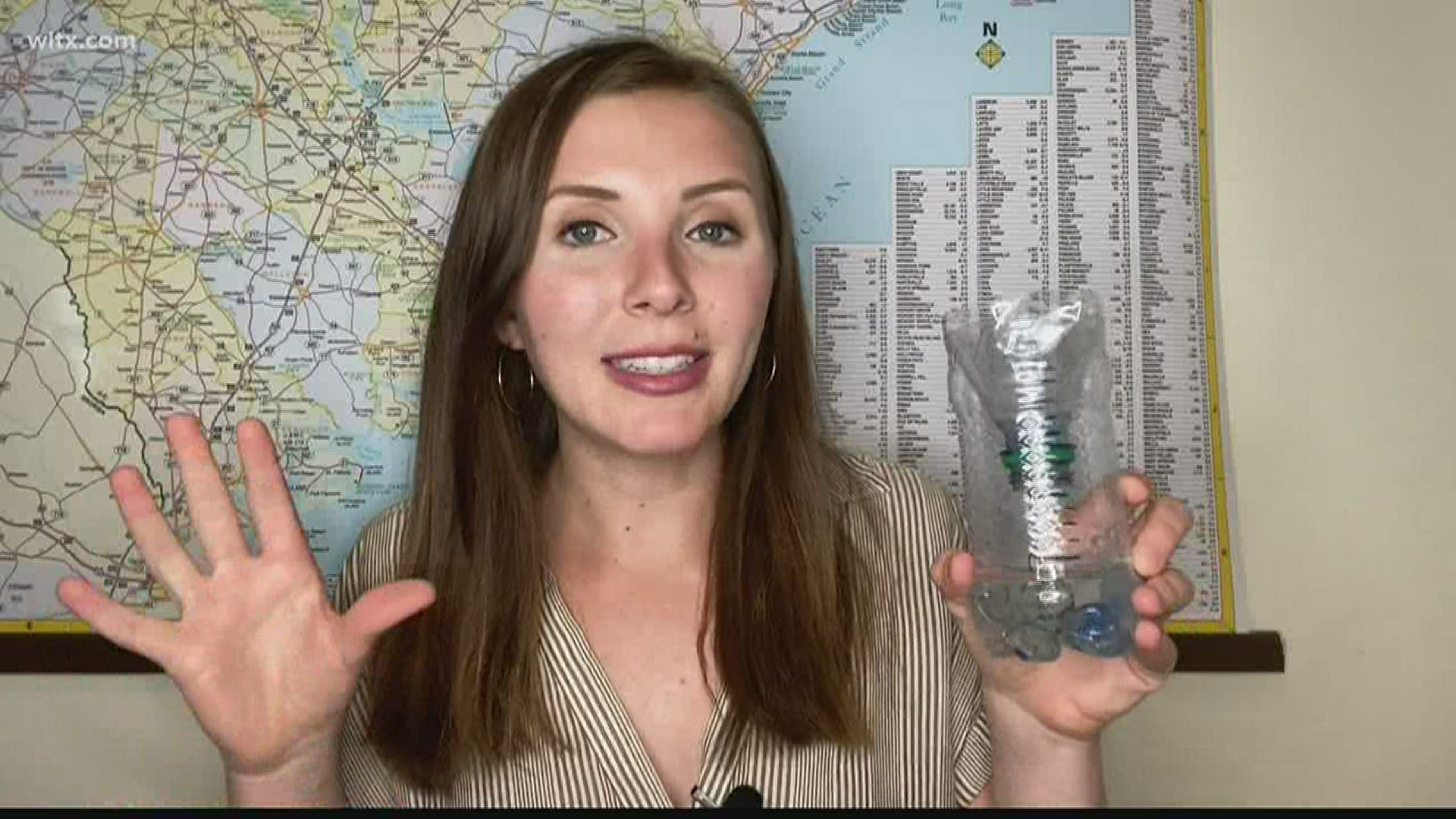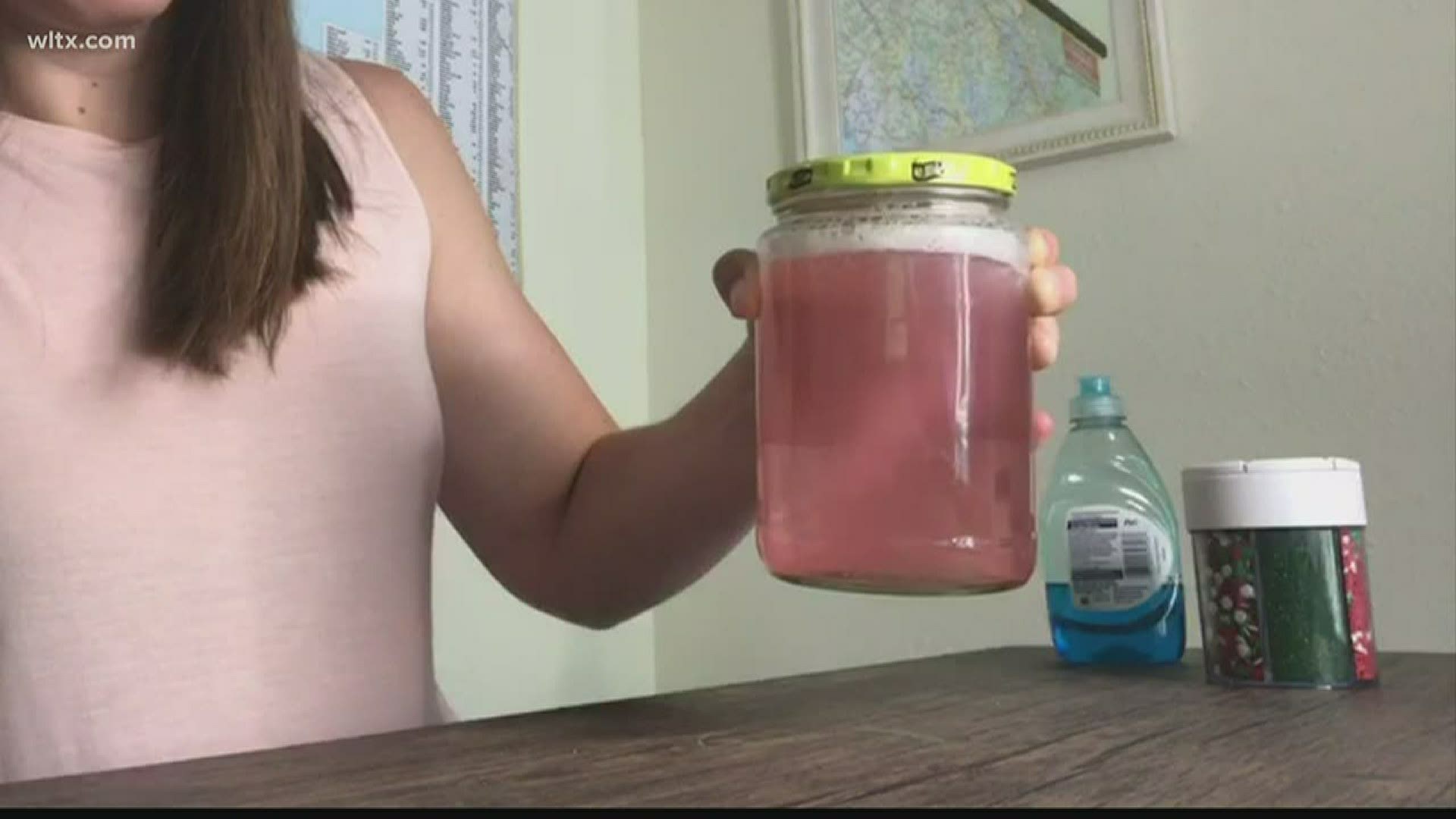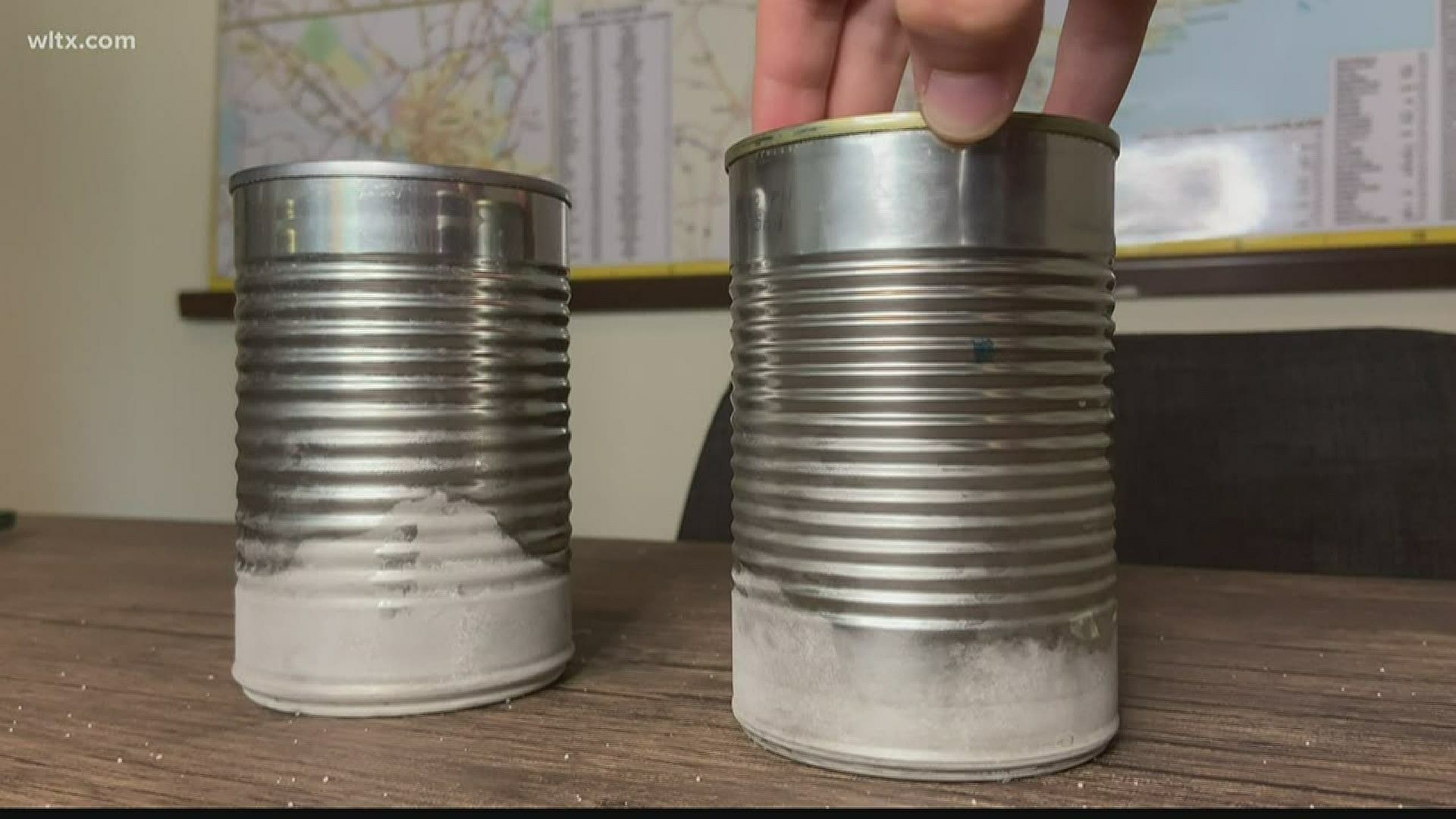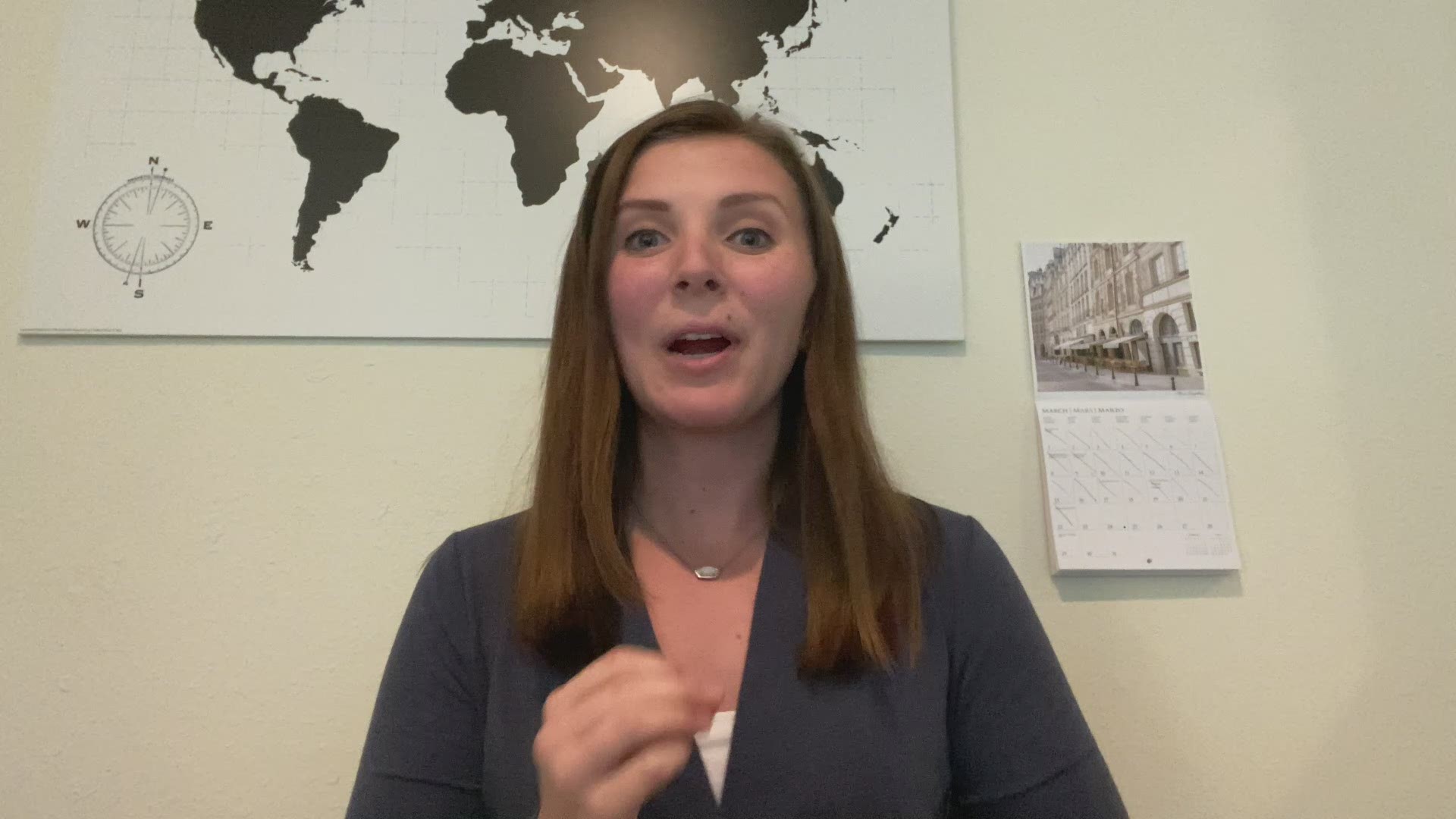COLUMBIA, S.C. — Even though students are spending their days learning from home, it is still possible to make learning hands-on and fun! Here are some of my favorite science experiments, mostly about the weather, that you can do with your kids with supplies you already have in your home.
Tornado in a jar
This one is pretty easy! And even though we cannot completely recreate the our atmosphere in a jar, we can still make a cool funnel and tornado.
Here's what you need:
- Glass jar and lid
- Water
- Dish soap
- Glitter/beads (optional)
Fill your jar full of water with about an inch of space left on the top. Put about a tablespoon of dish soap in the jar and then tightly close the lid. Move the jar in circles for a few seconds. Once you stop, you should see a funnel form in the middle of your jar! If you want, add glitter or beads to make "debris" circle around your tornado.
At-home rain gauge
Put this measurement tool outside before it rains to record how much rain falls at your house!
Here's what you need:
- Plastic bottle
- Permanent marker
- Ruler
- Pebbles/rocks
- Water
- Scissors
By cutting off the top of the plastic bottle and turning it upside down, you can make a rain gauge to put in your background. Use pebbles and water to weigh the bottle down, and make measurements with your ruler and marker so you can see how much rain fell.
Create frost at home
Despite the fact that summer is coming and we will not see frost for a few months, you can still make it at home and learn about dew points and frost points.
Here's what you need:
- A tin can
- Crushed ice
- Salt
This experiment is pretty simple. Pour the crushed ice into your tin can about half way through. Some water will likely start to condense on the outside of your can. Next, pour a good bit of salt over the ice and shake the can to make sure the ice is entirely coated. After a few minutes, you will see frost begin to form on the can! The longer you wait, the more frost you will see.
How does this happen? The salt lowers the freezing point of the ice, making it melt and cooling the can below freezing. This causes any water that had condensed on the side to freeze.
Make it rain
This one is pretty simple and can help if your student is learning about clouds, rain, or the water cycle.
Here's what you need:
- Clear cup or jar
- Food coloring
- Shaving cream
To do this experiment, fill your cup mostly full of water, leaving a little room at the top. Then, spray the shaving cream on top of the water (this is your cloud). You can then drop food coloring on top of your cloud, acting as droplets of water and, eventually, you will see it rain. Encourage your student to make a hypothesis about how quickly it will rain, what happens with thicker/thinner clouds, or if it rains more or less with more or less food coloring.
Make a cloud in a jar
I love this experiment because you can create a mini-atmosphere and cloud right in your kitchen. This experiment does require parental supervision if you are going to use a match!
Here's what you need:
- Clear glass jar with a lid
- Matches or hairspray
- Ice cubes
- Hot water
To make your cloud, fill a jar about 1/3 full of hot water. Then, light a match for a few seconds before blowing it out and dropping it in the jar. Quickly put the lid on the jar and an ice cube on top! You should see a cloud begin to form in your jar as water condenses onto the smoke particles in the jar. If you do not have matches, try using hairspray!
Germs and soap
This one is perfect in a time where hand washing is of the utmost importance! Learn why soap is so important at fighting off germs and viruses.
Here's what you need:
- Pepper
- Dish/hand soap
- Bowl of water
In this experiment, have your student dip their hand in water covered in pepper. You should notice the pepper sticking to your finger, kind of like germs. Then, have them take a different finger and rub it in soap, then put it back in the pepper water and see what happens!





